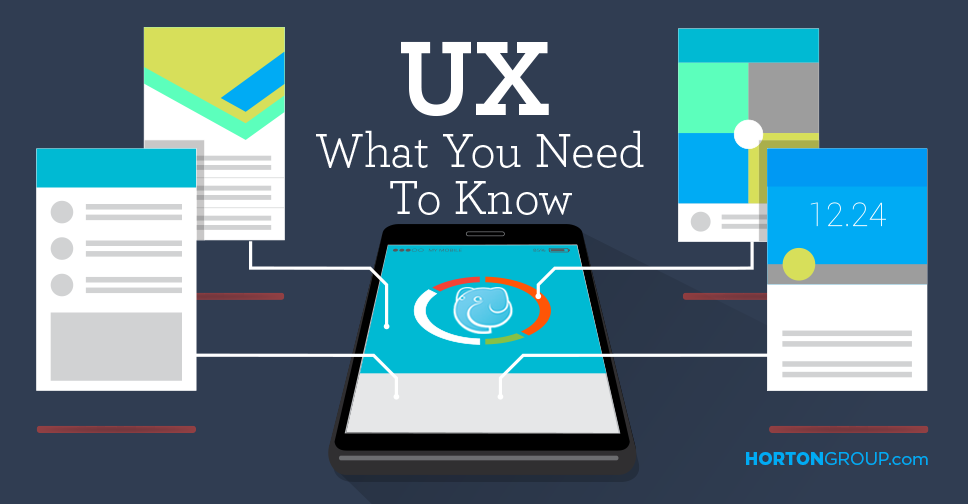
UX Design: What You Need to Know

We live in an age where digital disruption has become the norm. Seminal breakthroughs like the Internet and social media no longer come once a decade. They come once a day. Whole industries have been disrupted by digital technology, and marketing is no exception.
The product of this digital revolution, user experience (UX) is the ideation and design of intuitive consumer interactions. UX is the glue of digital marketing, binding messaging, development and conversion path to build strong brands and strong consumer interactions.
A More Concrete Example
Consider Apple. Apple started with the Mac desktop, and from there, the company has developed laptops, smartphones, tablets, watches and TVs. While the hardware behind these devices is impressive, that is not the most admiring aspect of one of the most revered names in Silicon Valley. Perhaps the single greatest competitive advantage of Apple is the ecosystem they have built — the ability for all of their devices to work in sync to provide an enhanced, more connected life for the consumer.
Web development, mobile apps and marketing are all part of the modern marketing strategy. The way to win business is no longer to find customers, but to have customers find you through an intelligent and data-driven online presence. The best companies design digital strategies to both engage consumers at the moment of initial contact and sustain the relationship to generate recurring revenue throughout the customer relationship.
What is User Experience Design?
If we were to boil down our definition of UX design further—user experience is masked complexity. For example, there is no doubt the iPhone is a complex machine, but I have seen children as young as three years old unlock the phone, open a game and begin playing.
Perhaps not every experience can be reduced to a preschool mind, but the image should be a guiding influence—“So easy, a 3 year old could do it.”
This is the basic mindset behind UX design, but what are some practical steps to implementing the practice in your digital marketing efforts? Here are a few basic steps to get you started:
Use Nonverbal Cues Whenever Possible
Show, don’t tell. Our brains process imagery up to 60,000X faster than text (that’s not a typo). This means you should always use design elements for communication whenever possible, because the result will always create more beauty, simplicity and resonance.
For example, most websites do not need to tell users to “keep scrolling.” A down-facing arrow does the job just as well. Even better is positioning content on the line between above and below the fold, which indicates to the user that there is more content below. Basic design choices like these give us the freedom to position content throughout a whole page, not just “above the fold.” One developer created a great illustration here to demonstrate this concept.
Build To Convert
Code and content can be combined to create compelling messages and imagery, but ultimately beauty is a means to an end. Businesses build websites to inform and delight customers with their offering, which means every digital asset should be designed to convert consumers into customers. Upon reaching a website, a mobile app or even a blog post, a consumer should be able to intuit the next steps in their relationship with the company. User experience can be a really powerful tool for creating strong conversion paths. Consider which content is most effective for creating new business, and make sure consumers can easily find those pages from any point in the website
For example, your fashion retail website may have a feature where consumers can mix and match products to create outfits. If you find that feature frequently moves users to make a purchase, you want to make that tool as visible as possible.
Some basic web analysis should uncover which pages are most effective at creating customers for your business. If you have not set up a platform like Google Analytics, we strongly recommend doing so in order to track conversions and determine which pages play what role in the customer acquisition process. (Need help with Analytics? Contact us).
Build To Connect
Your organization likely has several digital assets in play at once. Like the organs that keep our bodies healthy, each of these resources should be constructed to work together as one organism. Does social media help drive traffic to those high conversion pages? Does your mobile app provide consistent value for your customer? Does the website inform and inspire consumers to become loyal customers? Every investment in digital marketing should work in lockstep to meet business goals. Anything less creates a broken conversion path filled with confusion for would-be customers.
Check Analytics Daily
Web analytics have evolved to the point where digital marketing metrics can be directly attributed to revenue earned. Robust platforms like Google Analytics allow businesses to map conversion paths and understand online behavior. Establish traffic benchmarks, and constantly check pages for high bounce rates. High bounce rate most always means the page failed to meet consumer expectations (i.e. he/she had a poor user experience).
Conclusion
This post covers the tip of the UX design iceberg. A comprehensive UX strategy requires some serious development and marketing experience, as well as a solid understanding of your brand’s business goals. If you looking for a partner in the art of UX, contact Horton Group today.